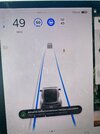Further to this. Now that NHTSA requires everyone (&Tesla) to report accidents involving Level 2+ features, is Tesla going to self-report data that it has sourced from the cars or will it wait until they are "made aware" of the accident by police, insurance, or drivers. They certainly could self-report certain kinds of incidents but are they under an obligation to do so. What if they just "look the other way" on incoming data that shows an incident.
For as someone pointed out earlier, other companies do not have the same over the air data that Tesla has. How are they going to get notified of incidents - one would assume through police, insurance, or drivers. Should Tesla do more than that just because they can? It's probably not to their advantage to self-report a higher frequency of incidents than they have "been informed" of. Are we concerned about Tesla snooping into our car data for accident statistics, or are we concerned if they don't self-report?
We know that Tesla does self-report or snoop when there is an airbag deployment or other severe accident, because they have done so in the past. The car will push the data after a bad crash. Does it push data for all incidents, and/or can Tesla alter the reporting level of the car so they report less serious (but still Level 2) reportable incidents?



